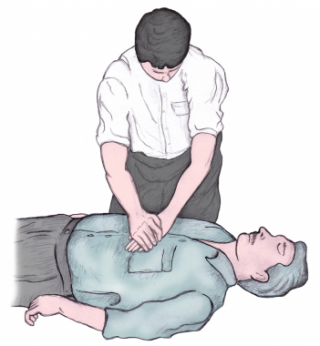 https://emedicine.medscape.com/article/1344081-overview https://en.wikipedia.org/wiki/Cardiopulmonary_resuscitation
https://emedicine.medscape.com/article/1344081-overview https://en.wikipedia.org/wiki/Cardiopulmonary_resuscitation
Cardiopulmonary resuscitation (CPR) consists of the use of chest compressions and artificial ventilation to maintain circulatory flow and oxygenation during cardiac arrest (see the images below). Although survival rates and neurologic outcomes are poor for patients with cardiac arrest, early appropriate resuscitation—involving early defibrillation—and appropriate implementation of post–cardiac arrest care lead to improved survival and neurologic outcomes.
CPR involves chest compressions for adults between 5 cm and 6 cm deep and at a rate of at least 100 to 120 per minute. The rescuer may also provide artificial ventilation by either exhaling air into the subject’s mouth or nose or using a device that pushes air into the subject’s lungs. Current recommendations place emphasis on early and high-quality chest compressions over artificial ventilation; a simplified CPR method involving chest compressions only is recommended for untrained rescuers. In children, however, only doing compressions may result in worse outcomes. Chest compression to breathing ratios is set at 30 to 2 in adults.
CPR alone is unlikely to restart the heart. Its main purpose is to restore partial flow of oxygenated blood to the brain and heart. The objective is to delay tissue death and to extend the brief window of opportunity for a successful resuscitation without permanent brain damage.